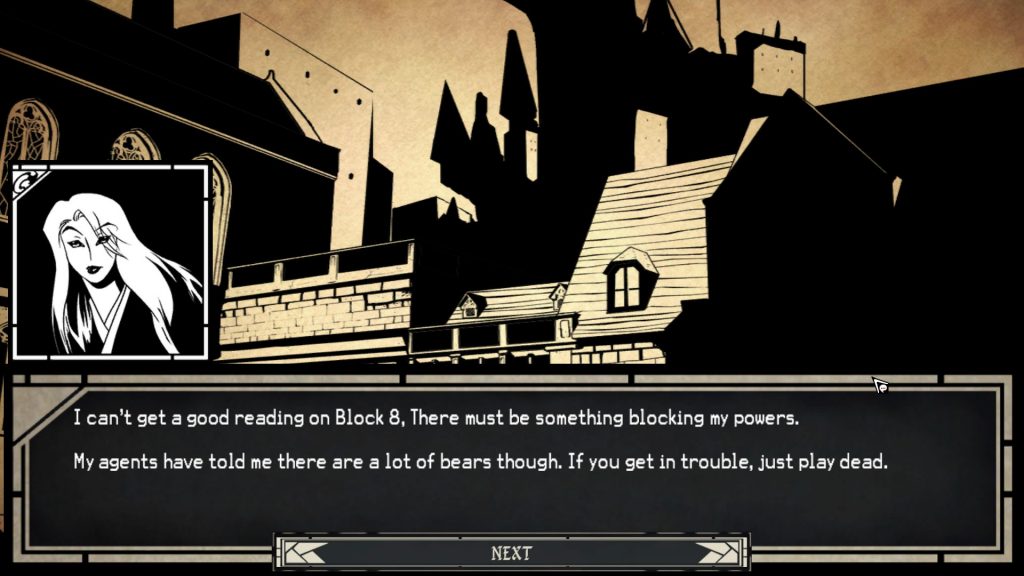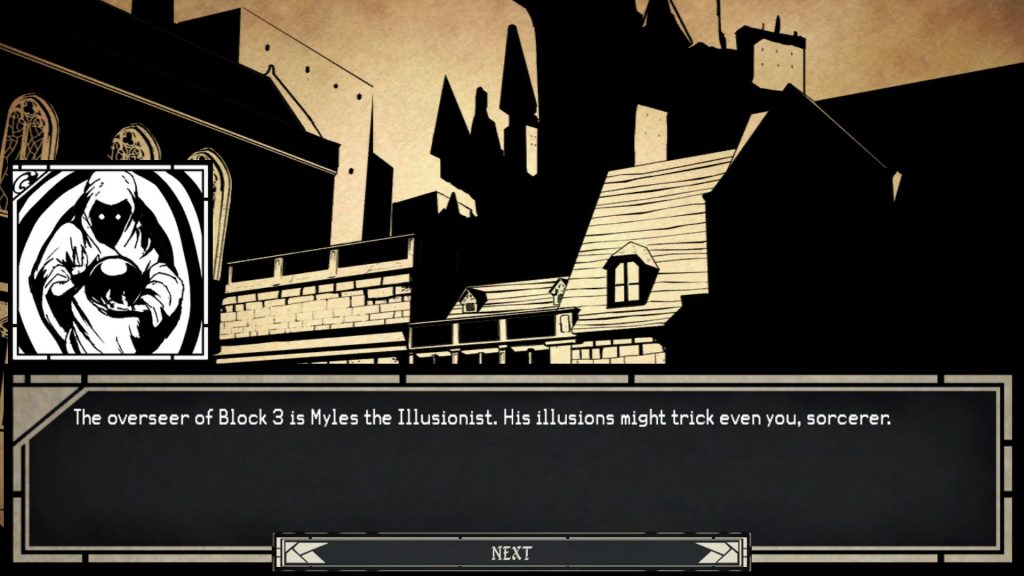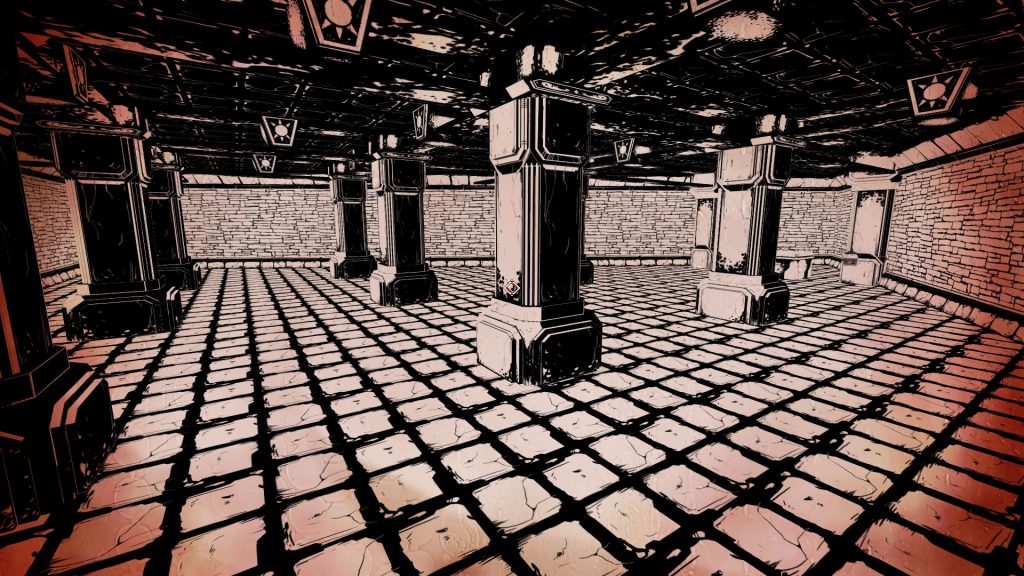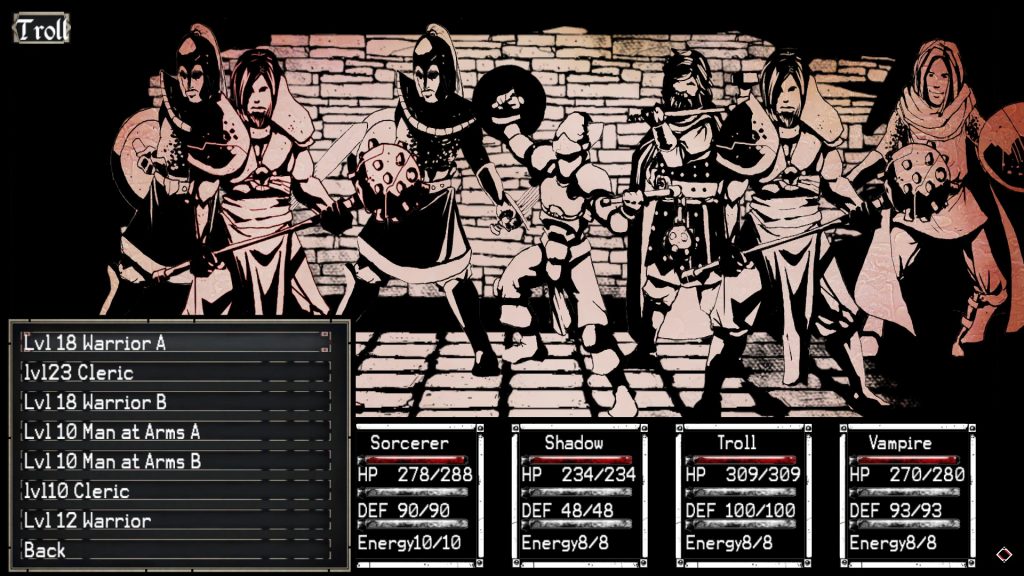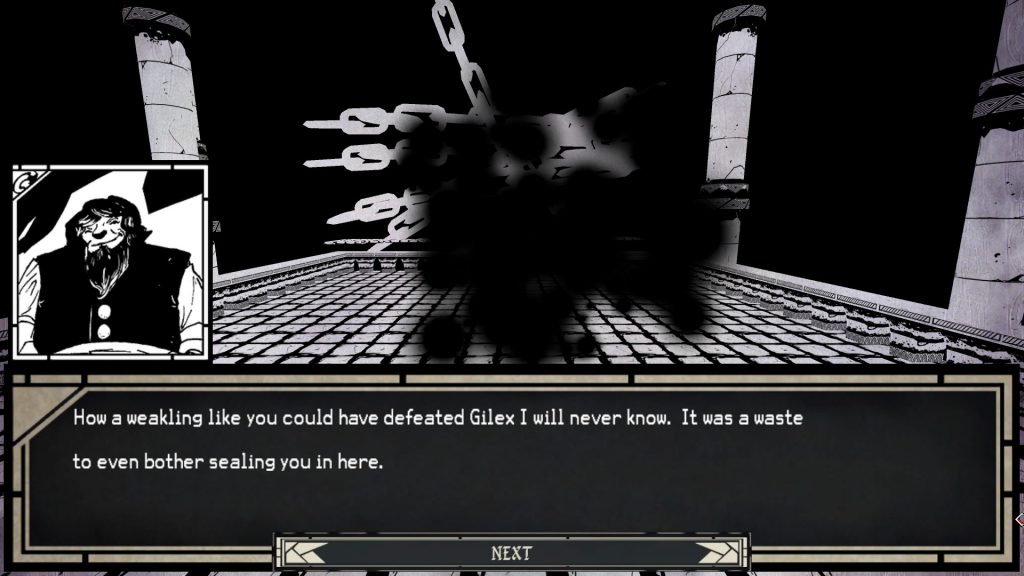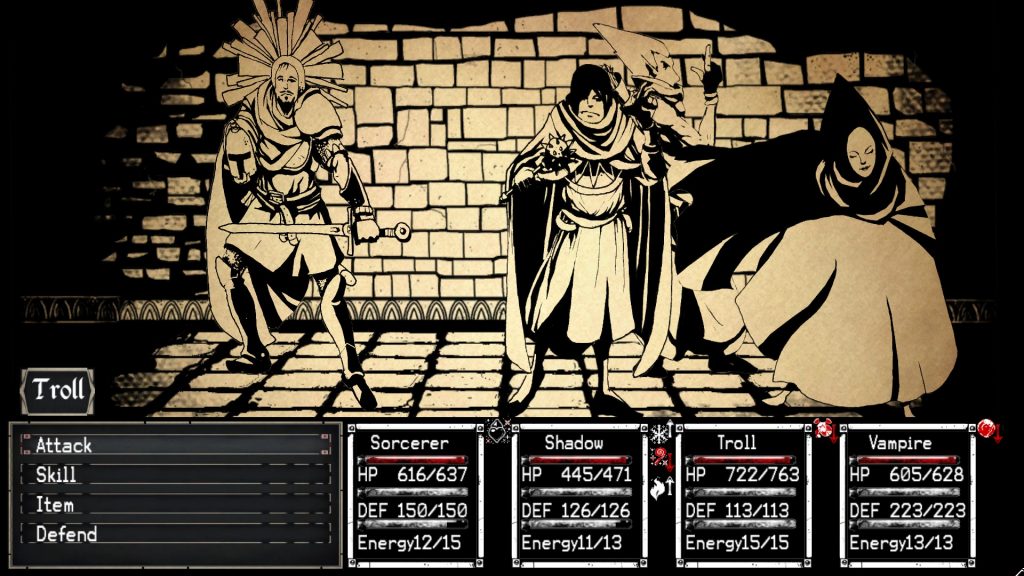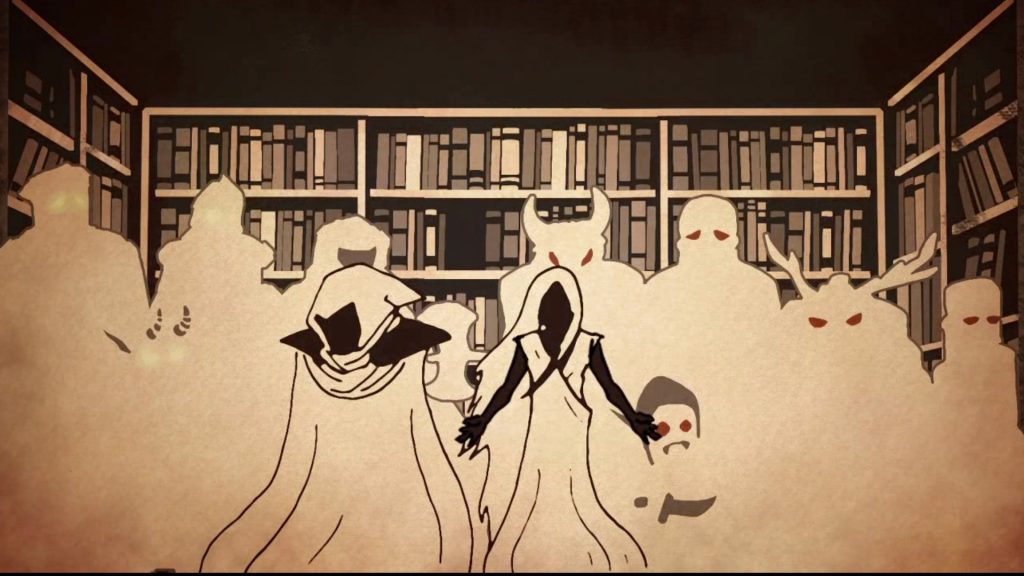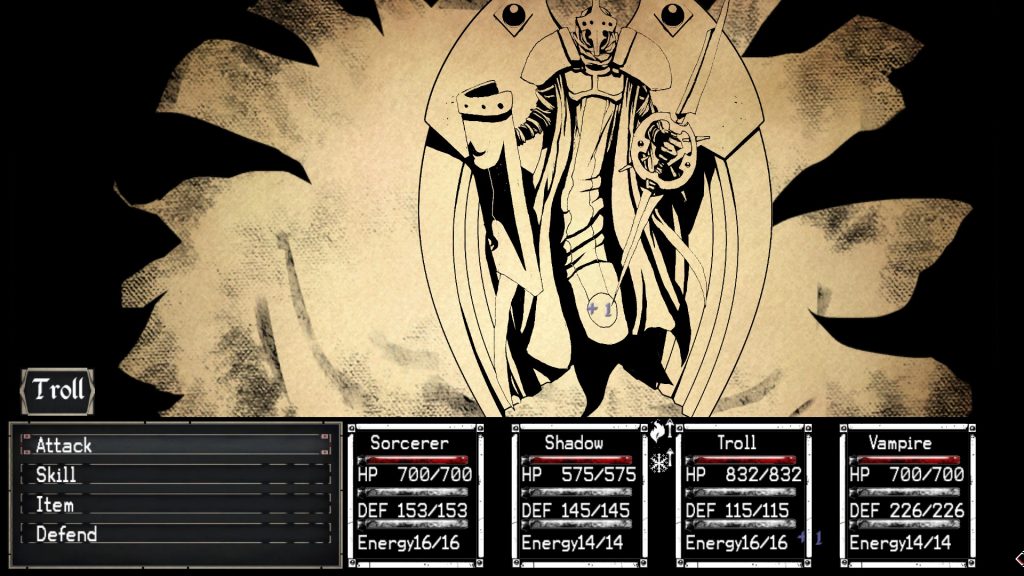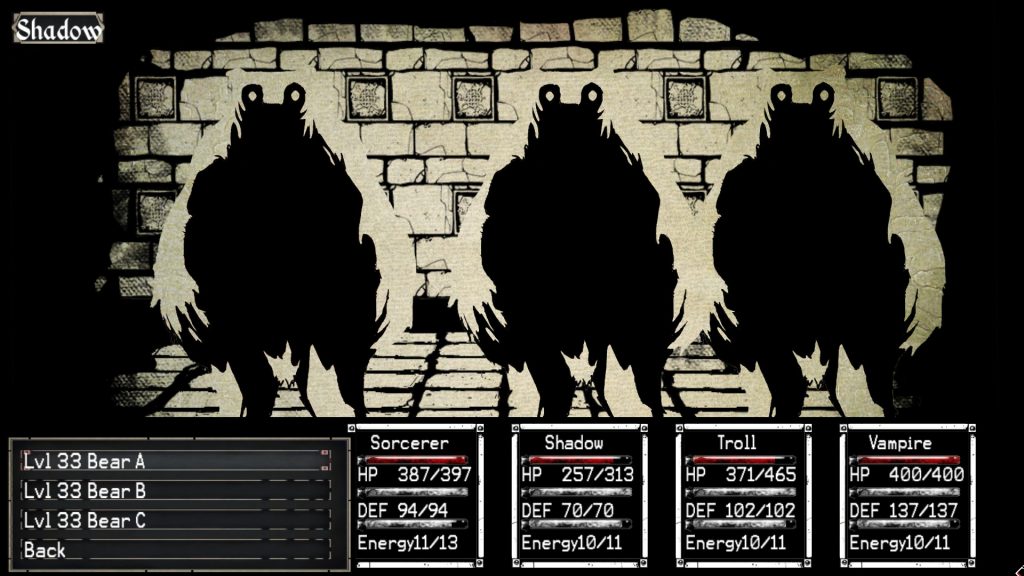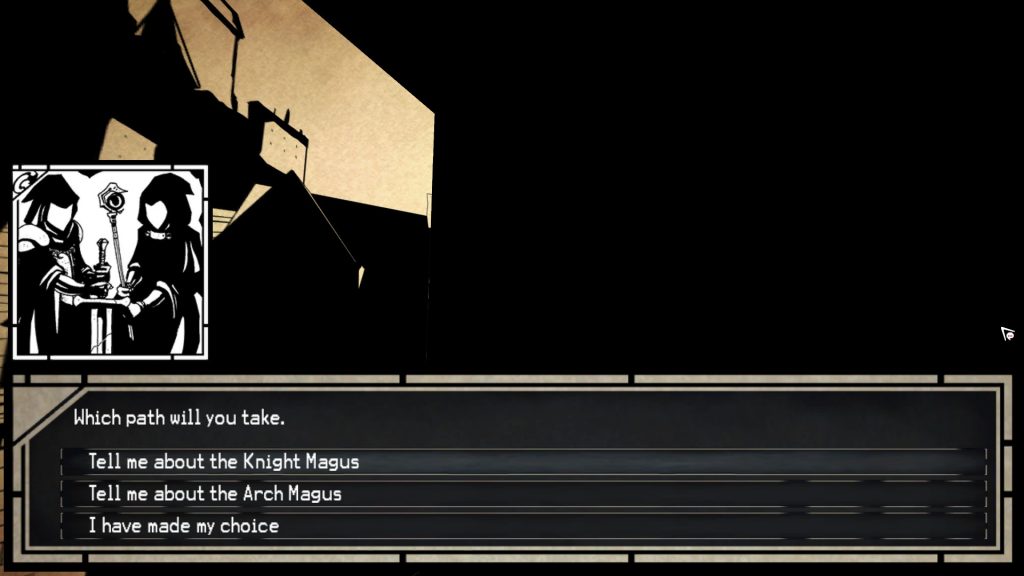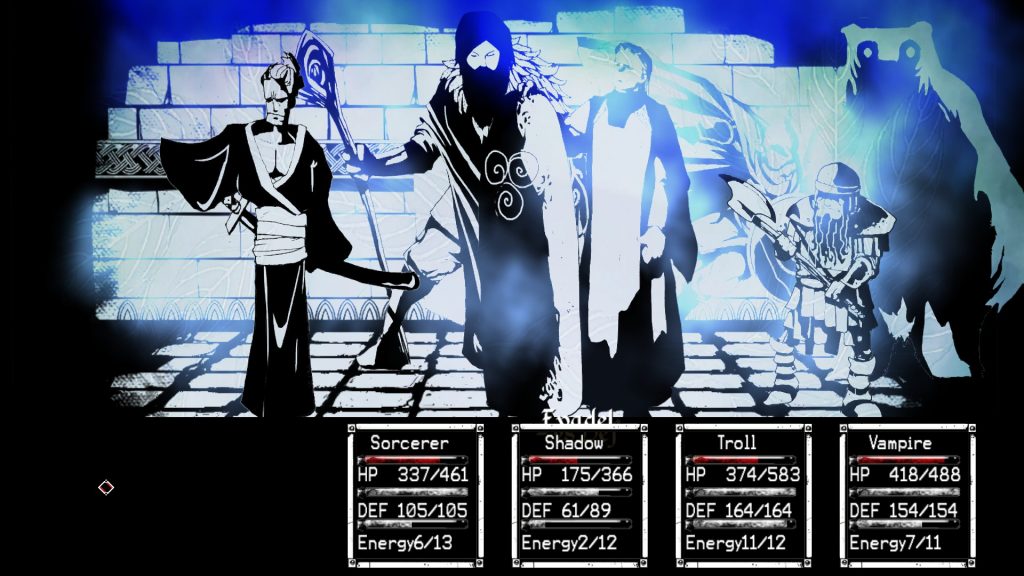I can happily tell you that my initial impression of our paper-pushing magician was not misplaced. Paper Sorcerer’s balance, difficulty and tactical combat is indeed in line with the Shin Megami series and even though it is not a perfect game, it did not fail to impress me on several fronts.
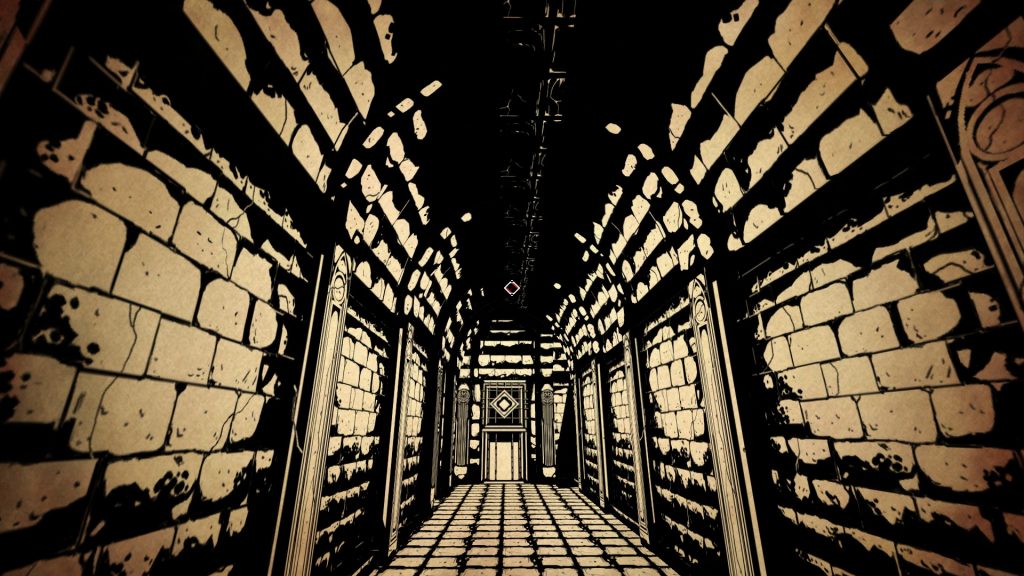
–Spoiler Alert–
Sadly, while the plot was not at all terrible, pretentious or filled with plot holes, it was the part of the game that had the most missed potential, along with the lore and world-building. The game starts off with a lot of intriguing sights and conversations and even some clever ideas. Ideas such as the currency of a world being gems that allow prisoners of the book to look on the world outside, escape from the librum prison being dependent on breaking the book’s stitching in the spine, and mystical personifications like “the spirit of the book.” While concepts like these don’t disappear entirely, as you play the game, they become much less frequent or impressive and/or just start repeating themselves by around levels 2-9 (there are 10 levels).
If you remember, we left off with the Sorcerer (the player) being imprisoned in a magic book by four heroes at the petition of the king of the land. You awoke in the book’s prison and were set free by a strange woman known as “The Spirit of the Book,” and I ended upon the musing of whether she was going to to betray us. Well, continuing on, you eventually figure out that the Spirit of the Book was actually the book’s first prisoner–a powerful sorceress named El who had taken over nearly half the continent when she was stopped by her lover. Her lover, concerned for her sanity, obtained the imprisoning book with help from the king, and managed to seal her away in it with the hopes of releasing her later when he had the ability to convince her to stop becoming a power-hungry tyrant. Time passed though, and for an unexplained reason he was never able to carry out this task.
As you travel through the book’s pages, all of the combat that you encounter are actually the guards from the ages who have agreed to seal themselves inside the book to act as immortal gate-keepers. While its not explicitly stated within the game, I think there is good evidence to support that whenever a guardian dies, their soul is sent to the catacombs (an optional 9-level dungeon) whereupon they wander around and you can encounter them again. The fact that the non-catacomb levels of the book have finite scripted battles but the catacomb has infinite random battles adds fuel to the idea’s fire.
Aware of your escape attempt, the four heroes who originally sealed you into the prison agree to enter the book and begin guarding the seals themselves. One by one you’ll encounter them and gain your chance to enact your revenge for their imprisoning you. Each level’s boss (whether it was a hero that sealed you or not) has some sort of dialogue that gives you hints about who the guardian is and what their motives are. The dialogue with the heroes was especially exciting and really added a sense of conflict between you and your enemy.
Eventually, the Sorcerer will make his/her way to the final floor, where they’ll fight the resurrected forms of the bosses from the previous levels, including all four heroes at once. Stepping foot towards the final seal in the book’s spine, the Sorcerer will encounter the Archon, the very life-force of the book itself. Upon the Archon’s defeat, it is revealed that it is actually a pseudo-copy of El’s lover. You see, as you journey through the book, you can find several journals scattered throughout the book’s floors. Reading them reveals that the creation something such as the book-prison can leave an impression of the creator inside the book, especially if its creation is fueled by a strong emotion such as love. El’s lover, being the one who created the book, left an impression of himself in the book in the form of the Archon. Before delivering the final blow, El runs to the Archon’s side and begs you not to kill the false-image of her lover. You can choose yes or no (I chose yes) and you go to break the final seal of the book.
Finally freed, everyone in the book steps outside to find that the book was in a… modern day bookstore. It is mentioned that time passes differently inside the book than outside and it appears the tome that sealed away these powerful creatures had lain forgotten for several hundred years on a dusty bookshelf. The journey over and a new journey just begun, the game then gives you a quick sentence or two explaining what you and each of your chosen summoned allies did in the newfound world. The best one was probably my Vampire who, according to the game, eventually became depressed with his immortality and loneliness and became popular on the internet by writing angsty poetry about living forever.
The best part about this game by far though, are its mechanics and balance. Back in the 90’s, you could get away with a lot when it came to RPGs because most of us nerds were desperate to get our hands on anything with stats and an EXP bar. It was acceptable back then to have a completely linear, poorly strategic combat system. For instance, in Dragon Warrior I, you only have one party member, you can’t change how he levels up or gains skills in any way and victory is largely dependent on having high levels and good equipment not because of strategy–but that was okay back then. Nowadays though, if you want to break into the RPG scene, your combat usually needs to be more detailed than this. There needs to be a good realm of strategy and it helps if that strategy is unique to your game. Paper Sorcerer delivers on both of these fronts hard.
First, off the combination of your allies, the way you obtain them, the way their equipment is managed (with each ally not only having things they can and can’t equip but also having completely different equipment slots) is unique. The Energy system which functions as your MP and the way you manage it is unique. The way that the Defense stat is handled is unique. While similar kinds of strategies may exist within classes and character from other games, the Sorcerer’s and summoned allies’ skills, themes and fighting styles are all unique. Oh, and the balance. OH the balance.
I was worried when I was allowed to choose my allies from a list of 15 (that’s right, fifteen) because I figured that the developer was setting themselves up for a broken balancing nightmare mess-of-a-game. Considering that you can only use 3 allies at a time plus the Sorcerer, I was rather concerned that one of two things were going to happen. Either A: the allies were all going to be bland copies of each other with only vague hints at differences between them or B. there was no way in Hell that this game was balanced and that some allies were going to be hilariously broken, while other allies were going to be useless. I don’t know how, and I’m a little scared to consider the amount of time that must have been spent to achieve this outcome but neither A nor B is true. How is that possible? This game was primarily made by one person. He had no clue which 3 party members I was going to choose and he offered me 15! Yet, somehow, all of my party members were valuable, balanced and unique. Oh, and did I mention that half-way through the game you get to choose a specialization class for the sorcerer? Because you can choose a specialization class for the sorcerer.
Just for the record, I chose Arch Magus, Shadow, Troll, and Vampire, with the vampire probably being my favorite. While I admit that it may be possible that there’s a party combination that is better than another, I can say that with this party my difficulty curve was near-perfect. Each level of the dungeon became a little harder and I had to think a little more to get my party to squeak out just a bit more damage or defend themselves a bit better. Oh yeah, that’s another thing. Defense. It’s actually a thing in this game. In probably 90% of all the take-turn RPGs I’ve played, status inducing, buff and debuff spells are all worthless. It’s usually because they’re horrendously weak, the combat is over so quickly that there’s no point in using them or all the enemies that you would actually use them on are completely immune to them. Paper Sorcerer on the other hand? I was blinding bosses, shielding party members and strategically buffing the team throughout the entire game. It was very rare that I ever got a skill that I didn’t use in some way to get a needed edge.
Paper Sorcerer is just a good game and is a balance/mechanic-lover’s playground. It’s not a perfect game–there are typos, minor bugs, the combat can be a bit slow and on rare occasions (mostly on floor 10) you might lose a fight at little fault to yourself. Sitting here, considering everything else that’s awesome about this game, I’m having trouble stopping myself from playing through a second time with a completely different party. Paper Sorcerer in its completion comes recommended at a full Tier 1 for its unique visuals, somewhat interesting story and its amazing combat. Any fan of take-turn RPGs will find this to be a treat and it might make fans of some who’ve never even played the genre before.
